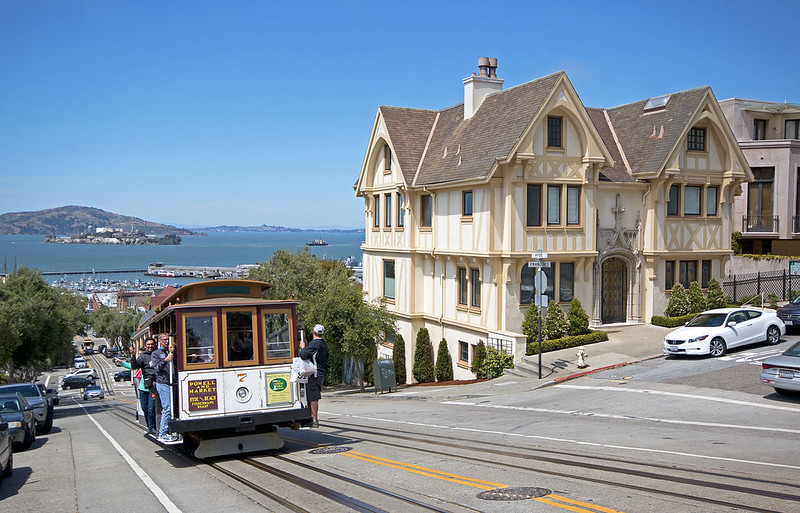By Railfan & Railroad Staff
While visitation to San Francisco continues to rebound after the pandemic, the same can’t be said for ridership on the city’s iconic cable cars.
Visitation to the city dropped dramatically at the start of the pandemic and local officials expect it to not return to pre-pandemic levels until next year. But despite that, more than 23 million people came to San Francisco in 2023 (in 2019, it was 26.2 million). But ridership on MUNI’s three cable car lines is still far below 2019 levels. In February, the system had recovered just 58 percent of its 2019 ridership. That year, anywhere from 430,000 to 480,000 people were riding the system every month. In February of this year, just 254,000 people jumped on board.
In light of that low ridership, MUNI’s board of directors is considering introducing a $5 all-day pass for the California Street cable car line (versus the standard $8 for a single-ride ticket).
MUNI is also teaming up with Market Street Railway — the non-profit that supports historic transit in the city — to provide special schedules and equipment this summer Thursday through Mondays, including the iconic Sacramento-Clay Cable Car “Big 19.” One such service is the “Hyde Ride,” a round-trip run for a single $8 fare from Aquatic Park (Hyde and Beach Streets) up the Hyde hill, across Washington St. to Chinatown and right back again to Aquatic Park. The service was run last year to celebrate the cable car system’s 150th anniversary.
The cable cars have been a presence in San Francisco since the 1870s and is the world’s last manually operated system still in existence. Cable cars were popular due to the city’s steep hills. But many cable car lines were destroyed during the 1906 earthquake, which brought about a wave of electric streetcar lines. In the 1940s, civic leaders tried to scrap the system for good, but a grassroots effort saved them. In the early 1980s, the surviving three lines — California Street, Powell-Mason, and Powell-Hyde — were completely rebuilt.



